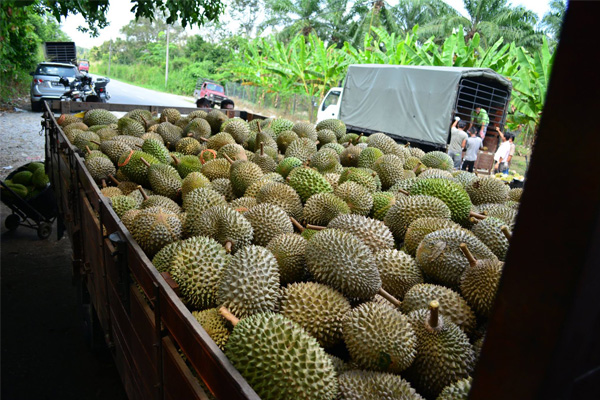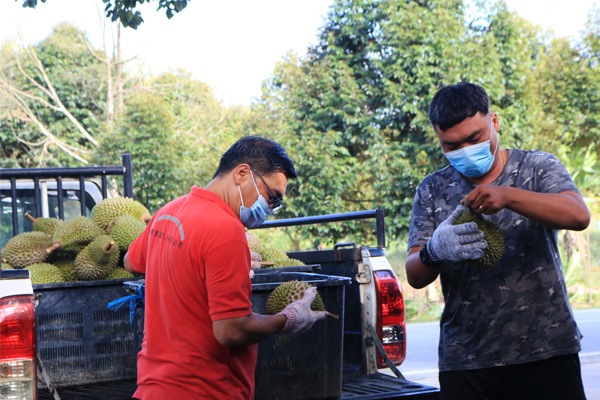

How to Choose a Ripe Durian?
Malaysian durians are basically all ripe if they fall off the tree by themselves, but still we will teach you how to pick a ripe durian just in case things went confusing for you.
First of all, check the smell, ripe durians will emit a good amount of aroma. Place the durian an inch away from your nose. Take a sniff, and you'll notice the fragrance coming off the durian. If the durian smells raw, grassy, it's definitely overripe, and the flesh will be soft and creamy. It should have a balanced fragrance that is neither too raw nor too pungent.
Then have a shake on it, listen to the durian carefully. If there is no sound, the fruits are becoming too ripe. The fruits are not ripe enough if you make a hard knocking sound. Dull, subtle knocks are what you want.
Finally, check the stem attached to the durian, if its fresh, we can find grass green interior when we scrape on the stem. If it is brown and solid, the durian might be over ripe or it’s been quite some time since it falls from the tree or it was being hand pluck and artificially ripened by chemicals.
How to Identify a Damaged Durian or Bad Durian
A bad durian can be easily identified just from observing. A good durian should be clean and greenish brown on the shell and the pulp should be clean and dry. If there is anything on the shell such as white spots, brown spots, holes, mould, it should be easily spotted and identified.
White spots are usually caused by a type of bugs called Short Tail Mealybug that is super tiny and living in groups. They can be described as polystyrene balls like snowflakes on the surface of the shell. Another type of white spots was caused by moulds which can be seen as a continuous splat of white spots.
Brown spots are usually caused by worms or what we called Durian Fruit Borer. It is actually a larvae of a moth that burrows into the shell of the durian.
Sometimes even if the shell is nice there will still be diseases inside the pulp where it could cause rotting inside the pulp and shell. This can be identified by brown rotting texture found inside the shell or the pulp.
